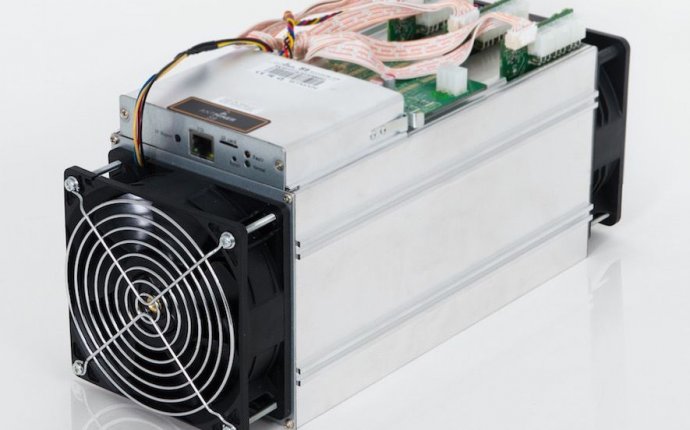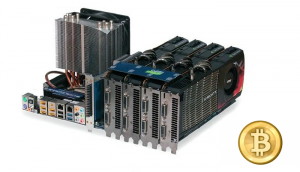
What exactly is Bitcoin mining?
A government is the one who decides when to print paper money. However, due to the fact that Bitcoin is decentralized, it has a different way of churning coins: mining. 
There are two main aspects to mining: confirming transactions to the block chain and introducing new bitcoins to the system.
To become a Bitcoin miner all you need is to run software with its .
Finalizing a Transaction
In the case of a transaction that is waiting to be finalized, the mining software waits for it to be broadcast throughout the Bitcoin network, and then does a series of tasks to process and confirm the transaction.
To be finalized, the transactions need to be included in the with proof of mathematical work. It would be very hard to do this without a machine because it would need extensive calculations that are required to be done in seconds. Thus, the miners are the ones who do the calculations before they are rewarded and their blocks get approved into the network.
A block chain is a public ledger that consists of all past completed transactions. Everyone who is a part of the Bitcoin network is able to see this.
A block is a record of new or recent Bitcoin transactions that are waiting to become a part of the block chain.
The block chain is kept in chronological order due to the proof of work that is required to complete transactions. This makes it very difficult and nearly impossible to reverse transactions because it would require new proofs on not just one block, but all the others. When two blocks (or 2 awaiting transactions) are found at the same time, the entire works on the first block they’ve found. This means the network works on solving one block at a time and whoever solves the block gets the reward. Then, the network goes on to solve another new block and the process repeats.
As more miners enter the field, the difficulty of finding new blocks is increased due to the network wanting to ensure that the average time for miners to find a block is always 10 minutes. Thus, it takes 10 minutes for any transaction to finalize in Bitcoin. The more miners there are, the more competition there is to mining. This also ensures that no one person controls the block chain, and instead a series of miners are the ones who finalize transactions.
Mining to Get Bitcoin
Miners get rewarded in bitcoins for each new block that they find for every transaction that gets finalized. This ensures that people will continue to mine, and it also puts more coins into the system. It also ensures Bitcoin’s security.
How Does Mining Benefit Bitcoin?
Mining is like a competitive lottery that makes it nearly impossible for anyone to continuously add new blocks into the block chain. Thus, it provides security to the network in that it makes sure that there is no authority figure or head honcho. It also prevents individuals from gaining too much power to be able to actually block transactions. In addition, mining makes it very hard to reverse previous transactions because it requires the proofs for all of the transactions following the one you want to reverse. Thus, if you make a deal in Bitcoin, be sure it is what you want.
Can You Cheat in Mining?
No, miners cannot cheat the network. They cannot increase their rewards, nor can they make false transactions. This is because Bitcoin is set up so that any block that has invalid data will get rejected if it goes against the Bitcoin protocol. Thus, even if some miners have ill intentions, the Bitcoin network remains safe and secure.
What is Hash Rate?
A hash is the main workload of finding and processing new blocks. One mathematical problem requires a hash to be done twice; this is called a double-hash. A hash rate is number of hashes per the amount of time it took to do them. Faster hash rates yields more bitcoins. In addition as powerful miners, with their high quality hardware, join the mining field, the network’s hash rate increases.
What is a Mining Pool?
This is very useful because with more miners in the system, the bitcoins one gets out of mining alone is not profitable in comparison to the amount one spends on the hardware and electricity. A mining pool is when a group of generating clients come together to find a block and then split the reward according to the processing power. This spreads the reward much more equally and ensures that one will actually get profit from mining. Thus, you should take care in finding a reliable pool. You can out for different mining pools’ hash rates, but more information is soon to follow on which mining pool to join.
When did mining begin? When will it end?
There aren’t concise records of when the first mining block was created, but it was during the year 2009 when Bitcoin was introduced. Mining for new bitcoins will end in the year 2140. All 21 million Bitcoin are approximated to have been mined by this time.
When bitcoin mining ends… will transactions still be processed?
Mining for new bitcoins will end, but mining to gain transaction fees will remain. This means even though new coins will not be generated, miners will still get the reward for the fees it takes for transactions to be completed. There is an infinite number of blocks in the network. Thus, due to the transaction fees, the Bitcoin network will sustain itself and you can still buy and sell with bitcoins.









